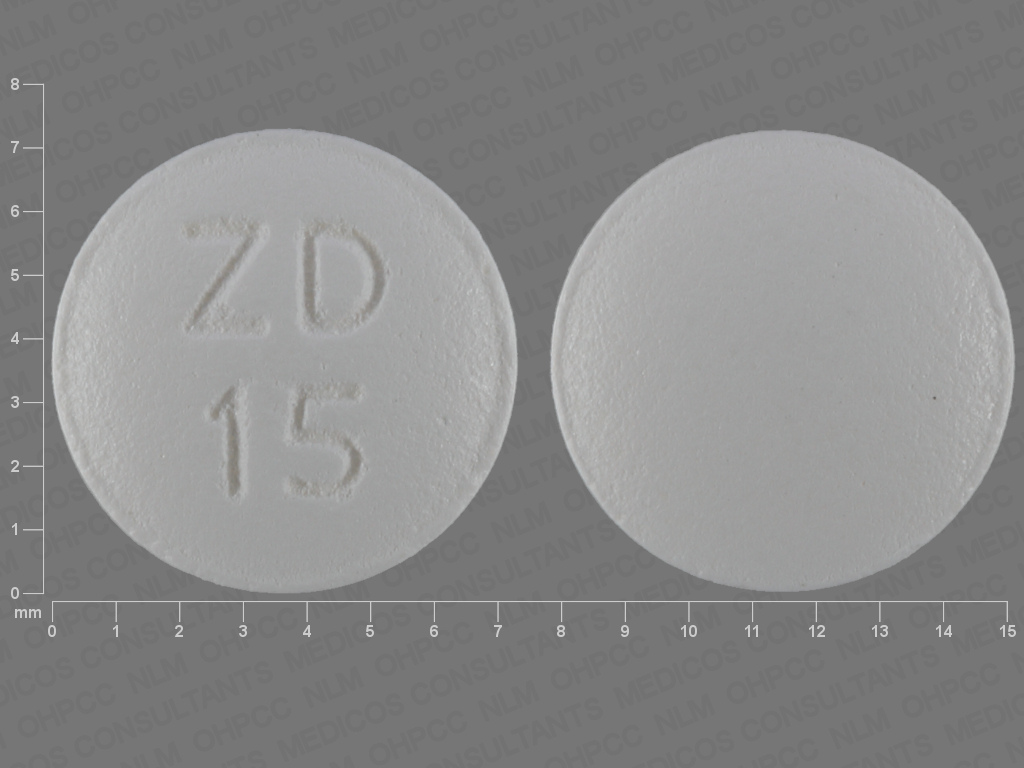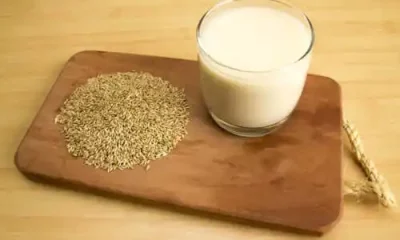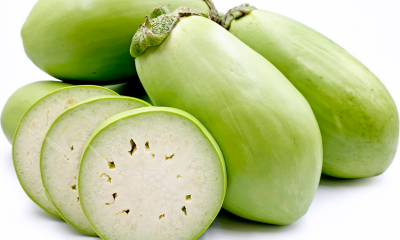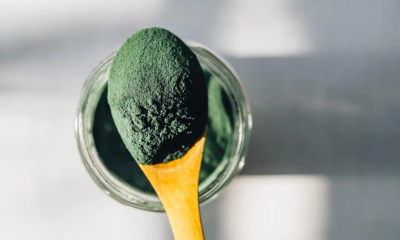Health
Cascara sagrada: origin, benefits and possible risks

Health
Serious side effects of topamax

Discover the serious side effects of Topamax
One of the medicines used to treat seizures in adults is Topamax, the active substance of which is topiramate.
The taking of this drug should always be done under medical prescription and with the corresponding prescription, as well as it is essential to follow the instructions regarding the dosage indicated by the specialist.
To learn more about Topamax along with its indications, use, and side effects, keep reading this article.
What is Topamax for
Topamax is a topiramate-based drug used to treat seizures in adults and children older than 2 years.
This anticonvulsant is administered in the event of partial seizures with or without secondary generalization or primary generalized tonic-clonic seizures and for the treatment of seizures associated with Lennox-Gastaut Syndrome.
It should be noted that this drug is also used to prevent migraine, although not as a treatment to alleviate them.
Warnings about Topamax
Taking Topamax should always be prescribed by a doctor and it will be necessary to notify your doctor beforehand in case of:
•glaucoma or other eye problems
•kidney disease, kidney stones, or dialysis
•breathing problems
•mood problems, depression, or suicidal thoughts or attempts
•liver disease
•osteoporosis, osteomalacia
•growth disorders
•be taking lithium
•suffer from diarrhea
•being lactose or sucrose intolerant
•It is also not recommended to take Topamax by pregnant or lactating women, as this drug can cause fetal harm or be excreted through breast milk.
Likewise, you should never drink alcohol while you are being treated with Topamax, as the side effects can be very serious.
Side effects of Topamax
Different side effects derived from taking Topamax have been described, so you should go or notify your doctor quickly if you feel any of the symptoms described below:
•Allergic reactions such as difficulty breathing, hives, swelling of the face, tongue, lips, or throat.
•Sudden changes in mood or behavior
•Anxiety and/or panic attacks
•Difficulty to sleep
•Irritation, agitation, and hyperactivity (mentally or physically)
•Depression or thoughts of killing yourself or hurting yourself
•Numbness or tingling in the extremities
•Headache, tiredness, dizziness, or drowsiness
•Changes in taste
•Nausea, diarrhea, indigestion, stomach pain, loss of appetite or weight
•Quick back and forth movements in your eyes.
Likewise, it should be noted that these are not only the adverse effects that Topamax can cause, so you should consult your doctor in case of any other type of alteration or symptom.
This article is merely informative, we do not have the power to prescribe any medical treatment or make any type of diagnosis.
We invite you to go to a doctor in the case of presenting any type of condition or discomfort.
Health
18 benefits of peanuts during pregnancy

- Peanut Nutritional Values
- 18 Benefits of Peanut During Pregnancy
- 1.- Excellent source of folate
- 2.- Natural source of vegetable protein
- 3.- Prevents birth defects
- 4.- Promotes optimal brain development
- 5.- Source of calories for the mother
- 6.- Contains healthy fats
- 7.- Reduces the risk of allergic diseases
- 8.- Helps control blood pressure
- 9.- Prevents gestational diabetes
- 10.- Fight depression
- 11.- Decreases the risk of weight gain
- 12.- Promotes skin health during pregnancy
- 13.- Source of vitamin E
- 14.- Great source of omega 3 fatty acids
- 15.- Excellent source of vitamin B complex
- 16.- Contains powerful antioxidants
- 17.- Rich in minerals
- 18.- Super healthy sandwich
- Peanut Precautions
Discover the 18 benefits of peanuts during pregnancy.
Peanuts during pregnancy can be very beneficial for future mothers and their fetuses. Peanuts are not only delicious, but they are also packed with vitamins, minerals, and other natural compounds that are great for pregnancy, which you can’t miss.
You must remember that pregnancy is a wonderful gift that only women can experience.
Being pregnant is like a noble job ordained directly by God for women, something that men could not do on their own. During pregnancy, the fetus magically grows inside the woman’s womb until the baby is born into the world.
To ensure the optimal development of the fetus before it is born, mothers must consume highly nutritious food because it is the only way the fetus can obtain food.
When it comes to the list of foods that mothers should consume during pregnancy, the list will be endless, but you could consider the benefits of peanuts during pregnancy, as peanuts
Peanut Nutritional Values
Peanuts are considered a healthy snack. However, this does not mean that you can consume without knowing the nutrients that peanuts contain.
By knowing the nutrients contained in peanuts, you can measure the number of peanuts needed during pregnancy, since surely the needs of each one are different from those of others.
Serving Size: 100 grams
Energy 567 kcal – 29%.
Carbohydrates 16.13 g – 12%.
Protein 25.8g – 46%.
Total fat 49.24 g – 165%.
Dietary fiber 8.5g – 22%.
Folate 240 µg – 60%.
Niacin 12mg – 75%.
Pantothenic acid 1,767 mg – 35%.
Pyridoxine 0.348 mg – 27%.
Riboflavin 0.135 mg – 10%.
Thiamine 0.64 mg – 53%.
Vitamin E 8.33mg – 55%.
Calcium 92mg – 9%.
Copper 1,144 mg – 127%.
Iron 4.58mg – 57%.
Magnesium 168mg – 42%.
Manganese 1,934 mg – 84%.
Phosphorus 76 mg – 54%.
Selenium 7.2 µg – 13%.
Zinc 3.27mg – 30%.
Sodium 18mg
Potassium 705mg – 15%.
From the table above, surely you have a general idea of the number of peanuts you could consume daily.
The key is to consume it in moderation, but sometimes it is necessary to ensure that the daily intake of a certain nutrient can be met to ensure optimal development of the fetus.
18 Benefits of Peanut During Pregnancy
Below are the benefits of peanuts during pregnancy that will give you reasons why you should add this healthy and delicious snack to your daily diet.
1.- Excellent source of folate
During pregnancy it is highly recommended to consume foods rich in folate and peanuts are one of them.
For every 100 grams of peanuts, approximately 60% of the daily intake of folate could be covered. It is common knowledge that folate is essential for fetal development, especially early in the trimester.
2.- Natural source of vegetable protein
Protein is essential for a mother during pregnancy and 100 grams of peanuts contains enough protein to meet the daily intake.
3.- Prevents birth defects
The birth defect can occur when the development of the fetus is disturbed or when there are insufficient nutrients to support development.
Peanuts are packed with vitamins and minerals that are great for pregnancy like folate to support optimal growth and minerals like iron and calcium to make sure there is enough red blood cell stock.
4.- Promotes optimal brain development
It is great food for the brain. During pregnancy, the fetus receives nourishment from the mother, and the folate consumed by the mother is not only beneficial to the mother, but also the developing brain of the fetus.
If you want to have a healthy and smart baby, eat peanuts during pregnancy.
5.- Source of calories for the mother
Each mother’s calorie needs may be different, but calories are essential for increased energy.
During pregnancy, a mother may suffer from fatigue and get tired easily. To help boost energy, peanuts can help restore it.
6.- Contains healthy fats
Not all fats are bad and peanuts do contain some healthy fats that are great for the mother during pregnancy.
Healthy fats are great for promoting a healthy heart, as mothers are at high risk for high blood pressure during pregnancy.
7.- Reduces the risk of allergic diseases
Recent studies have indicated that mothers who consume peanuts during pregnancy may reduce the risk of allergic diseases.
Not only allergic foods such as peanuts but also other types of allergies such as asthma.
8.- Helps control blood pressure
High blood pressure during pregnancy could be fatal for both the mother and the fetus. That is why it is very important to always keep your blood pressure under control.
To help control blood pressure, adding peanuts to your daily diet is highly recommended because basically, peanuts are great for your heart.
9.- Prevents gestational diabetes
On the table, it was seen that peanuts are quite rich in manganese. This mineral has an important role in regulating blood sugar levels during pregnancy to prevent gestational diabetes. Additionally, manganese also promotes optimal calcium absorption.
10.- Fight depression
During pregnancy, the mother is at risk of stress and depression. Well, some studies have shown that mothers who eat peanuts are much happier than those who don’t. So whenever she feels stressed, she snacks on peanuts.
11.- Decreases the risk of weight gain
Obesity during pregnancy is never good for both mother and baby. That’s why managing your weight is so important peanuts, while they do contain fat and calories, fats are healthy fats and packed with other nutrients that may help you control calories.
12.- Promotes skin health during pregnancy
One of the problems that every mother has to deal with during pregnancy is the skin problem.
Although they are prohibited from using cosmetics due to their chemical content, they could manage their skin problem just by consuming peanuts. Vitamin E and antioxidants will help prevent all skin conditions.
13.- Source of vitamin E
Vitamin E is the reason why a pregnant mother should look good. Vitamin E promotes skin health and makes sure that there is no such skin condition that the mother has to face.
Therefore, they could focus on her pregnancy instead of giving birth to a healthy baby.
14.- Great source of omega 3 fatty acids
If you think that fish is not your friend during pregnancy but you know that you need a great source of omega 3 fatty acids, you could replace fish with peanuts because they contain quite high healthy fats.
15.- Excellent source of vitamin B complex
In the table above you can see the high content of vitamin B found in peanuts per 100 grams. Most of them could satisfy almost half of the daily intake of vitamin B.
16.- Contains powerful antioxidants
Antioxidants are not only a solution against cancer, but during pregnancy, antioxidants could help the mother to maintain her immune system so that she doesn’t get sick easily.
17.- Rich in minerals
Looking for a quick fix to meet your daily mineral intake during pregnancy, peanuts are the answer.
You could see the nutritional table above about the value of minerals found in peanuts. 100 grams of peanuts are capable of satisfying half of the daily intake of minerals that your body needs.
18.- Super healthy sandwich
Well, during pregnancy you need to make sure that you consume enough food to ensure the optimal development of the fetus. Add peanuts to your daily diet because they are the super healthy snack that everyone loves.
Peanut Precautions
Peanuts may be packed with vitamins, minerals, and other natural compounds that are beneficial during pregnancy.
The list of benefits of peanuts during pregnancy mentioned above are scientifically proven facts. However, there are still some precautions about peanuts that you should be aware of as well.
Allergic reaction is one of the common things that can happen when peanuts are consumed. If a mother has ever been diagnosed as allergic to peanuts, she should not eat them.
Some studies also claim, that too many peanuts consumed during pregnancy could increase the risk of allergic reaction to the baby when they were born. Therefore, it is better to consume it in moderate amounts.
Peanut butter can be delicious, but it is recommended to consume it in its real form, as peanut butter has been through some processing and care must be taken with the amount of refined sugar in peanut butter.
Be careful with salty peanut snacks too because they can be delicious to eat during pregnancy, but salt contains sodium that could increase your blood pressure level. High blood pressure during pregnancy can be fatal.
Peanuts are healthy snacks that mothers can add to their daily diet, especially in the early stages of pregnancy when morning sickness is at its worst.
Just by eating peanuts as a snack, you could at least ensure that the baby inside your womb is still getting the nutrients that she needs to develop.
However, you need to keep in mind the precautions mentioned above if you want to reap the full benefits of peanuts during pregnancy and not the other way around.
Health
10 shocking health benefits of Arugula

Table of Contents
- Nutrition Facts
- Health benefits of arugula
- 1.- Detoxifies the Body
- 2.- Increases bone health
- 3.- Increases the immune system
- 4.- Prevents Cancer
- 5.- Prenatal care
- 6.- Increases metabolism
- 7.- Improve eyesight
- 8.- Increases the absorption of minerals
- 9.- Weight loss
- 10.- Improves overall health
- Tips for you to prepare and enjoy all the health benefits of arugula
- Related
- Discover the 10 shocking health benefits of Arugula.
The health benefits of Arugula include weight loss, reduced risk of cancer, healthy bones and better eyesight.
It has antioxidant properties and is good for healthy skin.
It also helps in strengthening the brain, improving metabolic functions, mineral absorption, and boosting the immune system.
- Arugula is a leafy green plant that belongs to the Eruca genus and the Brassicaceae family.
It is closely related to radishes, kale, and cauliflower. Arugula has a number of different names.
These include garden rocket, rucola, roquette, and colewort.
This plant reaches a height of 20-100 centimeters and is recognizable by its small white flowers.
Arugula leaves are lobed in nature, with 4-10 lateral lobes and a longer terminal lobe.
It is grown on a large scale for commercial consumption, but also exists as a wild species throughout the world.
It is used predominantly in the Americas, Europe, and North Africa.
To the untrained eye, arugula might look like fancy lettuce , but not all vegetables are created equal, and arugula has a wide range of health benefits that frequent eaters of this cruciferous vegetable can enjoy.
- Nutrition Facts
- Health benefits of arugula
- 1.- Detoxifies the Body
- 2.- Increases bone health
- 3.- Increases the immune system
- 4.- Prevents Cancer
- 5.- Prenatal care
- 6.- Increases metabolism
- 7.- Improve eyesight
- 8.- Increases the absorption of minerals
- 9.- Weight loss
- 10.- Improves overall health
- Tips for you to prepare and enjoy all the health benefits of arugula
Nutrition Facts
• Arugula is a lush green plant that is packed with vitamins, minerals, and antioxidants.
• It is a good dietary option for a healthier body and to keep your mind clear and focused.
• It contains high levels of folic acid and antioxidants such as vitamin C, vitamin K, and vitamin A, making it comprehensive in the fight against free radicals.
• It’s packed with carotenoids, as well as many other minerals like potassium, manganese, iron, and calcium, all of which are beneficial and necessary elements in a person’s diet.
• Arugula contains phytochemicals, which are beneficial in preventing cancer.
• It is also superior to some other leafy green vegetables, because unlike other varieties, arugula is low in oxalates, which are chemicals that actually inhibit the absorption of minerals in the body.
• All in all, arugula is a nutrient-dense, low-calorie food.
Health benefits of arugula
The vitamins, minerals, phytochemicals, and antioxidants present in each arugula leaf are certainly beneficial to incorporate into your diet.
1.- Detoxifies the Body
Arugula is a great source of antioxidants and can greatly increase a person’s ORAC (Oxygen Radical Absorption Capacity) value, which is a method of measuring antioxidant capabilities.
Antioxidants work to maintain a healthy balance of enzymatic reactions within cells, while actively seeking out and destroying disease-causing free radicals that can attack your system.
Your immune system will thank you for choosing arugula, too, because antioxidants work to bolster your defenses against simple illnesses like the common cold, as well as more complex afflictions like cancer, heart disease, and premature aging.
2.- Increases bone health
Among the benefits of arugula is the presence of vitamin K which gives your body an anti-inflammatory boost.
Vitamin K also stimulates osteotrophic activity in cells, which means that it promotes bone formation.
The gradual degradation of nerve connections, which occur in conditions such as; Alzheimer’s disease can be prevented through an increase in the intake of vitamin K.
The consumption of arugula has been cited as a preventive method of this disease.
The combined effects of low oxalate levels (allowing more minerals into the system) and the presence of so many minerals in the plant itself make it a strong support system for healthy bones.
People with osteoporosis can see improvements.
In the same way, arugula can be used as a preventive step, ensuring the health and strength of the bones before the effects based on age and the activity of bone degeneration are serious.
3.- Increases the immune system
Arugula is loaded with vitamins and minerals that in some way strengthen the body’s immune system defenses, this causes the body to be stimulated to create more white blood cells.
This plant has a number of properties that help improve the strength of your immune system.
Vitamin C is one of the best defenses for your body, inflammatory free radicals are flushed out of your body before they can cause serious damage.
This vitamin is found in large amounts in arugula, helping to prevent cancer.
Its vitamin sources are excellent for maintaining good health in the body, in a way that helps your immune system.
4.- Prevents Cancer
Another benefit of arugula is the large amounts of phytochemicals it contains and this inhibits the activity of cancer-causing cells.
Phytochemicals are substances such as thiocyanates, sulforaphane that are effective in counteracting cancer-causing tendencies in the body’s processes.
Studies suggest that these compounds help fight prostate, breast, cervical, colon, and ovarian cancers.
5.- Prenatal care
For those mothers who are waiting to conceive their baby, arugula is a wonderful option to add to your diet.
Folates, a classification that includes folic acid, have been shown to decrease the occurrences of certain mental defects in newborns.
It is rich in folates, as are many leafy vegetables.
6.- Increases metabolism
One of the health benefits of arugula that turns out to be important is the presence of B vitamins, which improve metabolism.
Vitamin B8 are involved and assist in all different cellular activities, including energy production, fat synthesis, red blood cell production, and many other processes vital to cellular and metabolic health.
7.- Improve eyesight
Arugula is a well-known source of carotenoids, which are natural pigments that have been known to effectively improve the ability to see properly.
In fact, carotenoids slow down the macular degeneration process.
In most cases, the deficiency causes cataracts, which then have to be removed with surgery.
By increasing the amount of carotenoids in your diet (arugula is recommended for this type of deficiency).
The monthly arugula can slow down that classic symptom of old age.
8.- Increases the absorption of minerals
Another health benefit of arugula is the very low level of oxalates when compared to other popular leafy vegetables like spinach.
Oxalates inhibit mineral absorption by body systems, which is counterproductive to consuming minerals.
So minerals, such as copper and iron, which are obtained from the plant, are more easily absorbed by the body for efficient use.
9.- Weight loss
Including arugula in a diet is the same as any other low-calorie plant, rich in vitamins and nutrients, and will inevitably have a positive effect on any weight loss attempt.
By meeting so many nutritional needs , it is an easy way to improve your health and keep your system balanced, without making drastic changes to your diet.
10.- Improves overall health
Vitamin A is one of the antioxidants mentioned above, and its significant presence in arugula also ensures the improvement of the condition of your bones, teeth, and eyes.
The flavonoid compounds in all leafy vegetables similar to arugula have been shown to protect against skin, lungs, and various types of oral cancer.
Tips for you to prepare and enjoy all the health benefits of arugula
• Green salad
Combine fresh arugula, lettuce, radicchio, and parsley in a bowl. Add the olive oil, salt, pepper, and a little lime juice for extra flavor.
• Cheese salad
Mix fresh and dried arugula and thin slices of Parmesan cheese in a bowl.
Add the sliced onion, lemon juice, salt, and pepper.
You can also add other vegetables, fruits, and nuts to make your own salad.
• Pasta
Mix the arugula and lemon juice in a bowl.
Spice with salt and pepper.
Cook, drain the pasta and add the arugula mixture, olive oil and cheese.
-

 Food5 months ago
Food5 months ago10 + Benefits of carrot juice and side effects
-

 Food5 months ago
Food5 months ago8 shocking benefits of leek juice and side effects
-

 Health5 months ago
Health5 months agoBenefits of guava leaves Sensually
-

 Health5 months ago
Health5 months ago10 shocking health benefits of Canary seed milk
-

 Health5 months ago
Health5 months ago7 health benefits of cashew leaves and side effects
-

 Health5 months ago
Health5 months ago13 shocking health benefits of Thai eggplant
-

 Weight Loss5 months ago
Weight Loss5 months agoKelly Osbourne weight loss 2022
-
Weight Loss5 months ago
Chrissy Metz Weight Loss Secret (2022)












